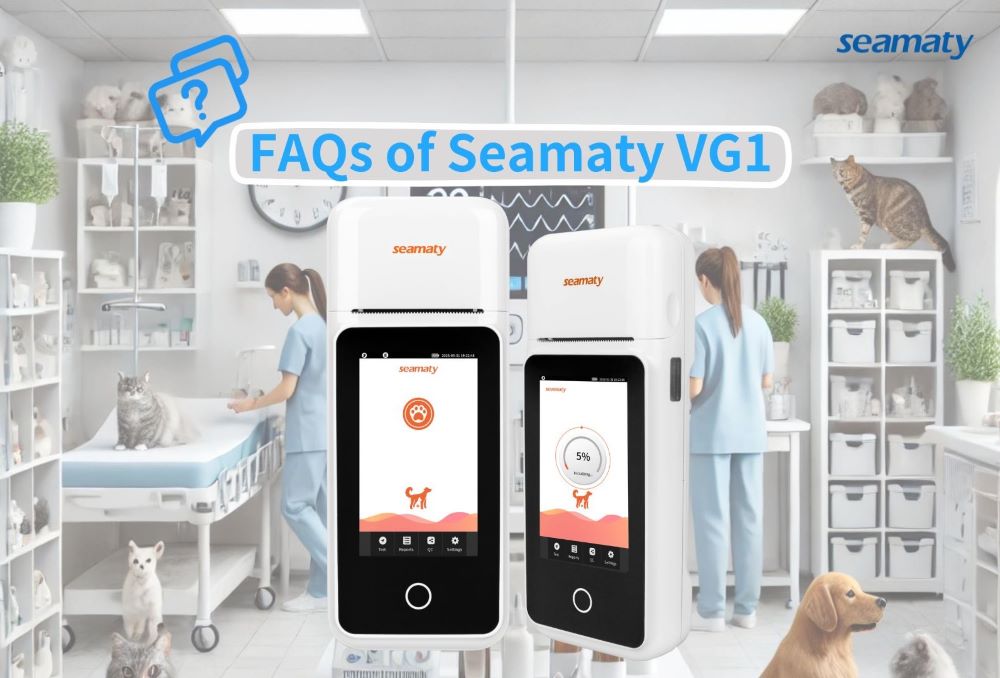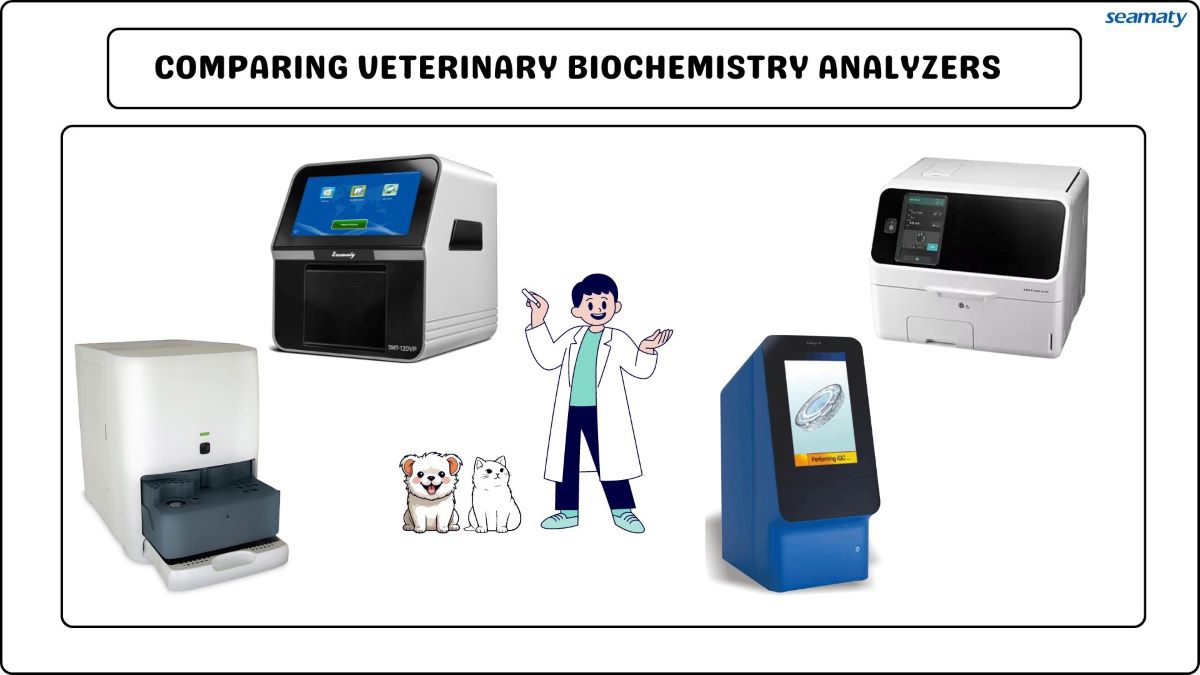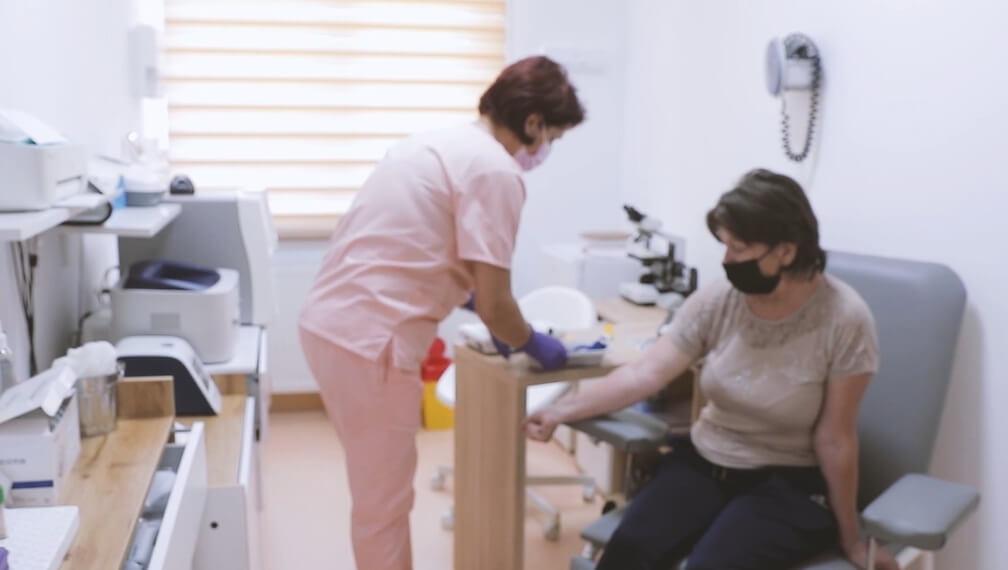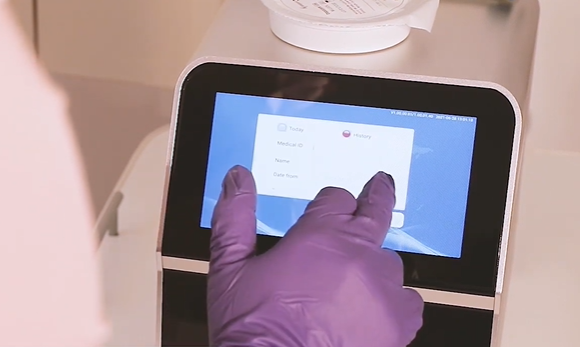release time:2024-11-07 15:23:01

1) Portability
The Seamaty VG1 is designed for easy transport and use wherever it’s needed. This handheld device is lightweight and features a built-in battery, allowing veterinarians to take it directly to the patient—whether at a clinic, farm, or field. Unlike larger, stationary analyzers that require transporting samples to a central lab, the VG1 offers rapid, on-the-spot results, minimizing delays and preserving sample quality.
2) Ease of Use
With a simple 3-step testing process that only needs 2-3 drops of blood, the Seamaty VG1 is incredibly user-friendly. Unlike more complex analyzers that require additional sample preparation and training, the VG1 enables veterinarians to quickly conduct tests without extensive lab experience, reducing training time and enhancing efficiency.
3) Test Card System
The VG1 uses multi-parameter, single-use test cards, each with specific biosensors for various diagnostic needs. This flexible system allows veterinarians to select the exact tests needed in a single, compact platform, eliminating the hassle of changing cartridges or reagents for different parameters, which is often time-consuming and wasteful.
4) Speed of Results
In just 4 minutes, the VG1 delivers accurate test results, crucial in urgent situations. Faster results allow veterinarians to make quick decisions and provide timely care, which can be essential in emergencies, such as when an animal suffers from shock due to electrolyte imbalance. Many traditional analyzers take longer, which can delay critical treatments.
The Seamaty VG1 is designed with accuracy comparable to that of traditional blood gas analyzers, thanks to advanced technology and quality control measures:
1) Advanced Technology
The VG1’s multi-parameter test cards contain precise biosensors that measure blood gas, electrolyte, and critical care parameters. For instance, its sensors detect even subtle changes in pH, carbon dioxide (pCO2), oxygen (pO2), and electrolytes like sodium, potassium, and chloride.
2) Calibration and Quality Control
The VG1 includes built-in calibration processes, ensuring consistent accuracy with minimal maintenance. This automated calibration system is more convenient than traditional methods, which often require technician intervention and the use of standard solutions.
3) Validation Studies
To ensure accuracy, Seamaty conducts rigorous validation studies comparing the VG1’s results with those from traditional analyzers. Clinical comparisons demonstrate that the VG1 provides results within acceptable margins, giving veterinarians confidence in their diagnostic decisions.
Note: Accurate results depend on correct sample handling. Improper collection, such as air contamination, can affect results regardless of the analyzer used.
Absolutely. The Seamaty VG1 is ideal for high-volume veterinary environments:
1) Quick Testing
With a rapid, 4-minute turnaround, the VG1 helps veterinarians make fast, informed decisions in emergencies, such as when treating a dehydrated equine patient with electrolyte imbalance.
2) Ease of Operation
Its simple operation and minimal blood volume requirements mean even new staff can quickly learn to use the VG1, reducing training time and maximizing staff efficiency.
3) Portability
The VG1 can easily move between exam rooms, making it convenient for high-traffic clinics. Veterinarians can perform tests on-site without relying on a central lab, streamlining care.
4) Multi-parameter Testing
Single-use test cards with various test options allow the VG1 to handle diverse diagnostic needs, from routine blood gas analysis to critical care biochemistry, enhancing clinic efficiency.
5) Real-time Data Transmission
With its real-time data capabilities, the VG1 integrates seamlessly into digital patient records, ensuring timely information-sharing among clinic staff.
Yes, the VG1 is versatile enough to serve both small and large animal patients.
1) Small Sample Requirement
The VG1 only needs 2-3 drops of blood, making it suitable for small animals like cats, where larger samples are hard to obtain, and large animals like horses and cattle.
2) Comprehensive Test Options
The VG1 offers a range of tests relevant to both small and large animals, from respiratory assessment in dogs to electrolyte monitoring in cattle.
3) Portability for Field Use
The VG1’s portability and built-in battery enable testing anywhere, whether at a veterinary clinic, on a farm, or at a house call.
Note: Veterinarians should interpret results with animal-specific normal ranges in mind.
Yes, the VG1 supports real-time data sharing through two methods:
The VG1’s maintenance requirements vary based on usage:
Prices for the VG1 vary based on factors like specific configurations, bulk purchases, and any current promotions. For the latest pricing, contact Seamaty’s official sales channels on Seamaty website or via email at sales@seamaty.com.

2024-09-12
Discover the pros and cons of top veterinary biochemistry analyzers—IDEXX Catalyst One, Fujifilm DRI-CHEM NX600, Zoetis Vetscan, and Seamaty 120VP. This detailed comparison helps veterinary professionals choose the best analyzer for their practice based on features, accuracy, cost, and ease of use.

2024-05-07
Unlock faster diagnoses! This article explores 5 key methods to boost the efficiency of your POCT biochemical analyzers, including innovative technologies like fan-shaped reagent disks. Improve workflow, reduce turnaround time, and enhance patient care.

2022-09-01
The development of POCT is driven by the rising demand for clinical testing. Although traditional testing methods can meet the requirements of clinical testing in terms of test specimen volume, automated operation, accuracy of results, performance stability, etc.. However, they are unable to meet the requirements in terms of portability, testing speed, and complexity of the testing process. In the family health management and primary care institutions testing, large medical testing equipment is difficult to spread. We took the hospital market as an example and sorted out the demand for POCT products in some hospital departments.